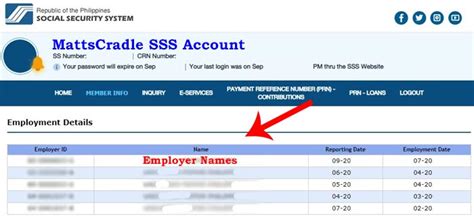Unearthing Your Employment History: A Step-By-Step Guide

Have you ever been asked to provide your employment history and found yourself struggling to remember your past job titles, duties, and dates of employment? Or perhaps you’re starting a new job search and need to update your resume with accurate and detailed information about your work experience. Whatever the reason, unearthing your employment history can be a daunting task, especially if you’ve had multiple jobs or gaps in your employment. But fear not, we’ve put together a step-by-step guide to help you uncover your employment history and present it in a clear and concise manner.
1. Start with the Basics
Before delving into the details of each job, start by creating a list of your previous employers, job titles, and dates of employment. This will serve as the foundation for your employment history. If you’re having trouble remembering this information, try checking your old tax returns, W-2 forms, or social security statements. You can also reach out to previous employers or colleagues for verification.
2. Gather Details on Each Job
Once you have a list of your previous employers, start gathering information on each job. This should include a detailed description of your job duties, accomplishments, and any promotions or raises you received. If you have old performance evaluations or job descriptions, use them as a reference. You can also reach out to former supervisors or colleagues for insight.
2.1 Identify Key Accomplishments
When describing your job duties, highlight any key accomplishments or projects you completed during your time in that role. This can include anything from increasing sales revenue to implementing a new system that improved efficiency. Quantify your achievements whenever possible, using numbers and percentages to demonstrate the impact you had.
2.2 Don’t Forget About Volunteer Work
If you’ve done any volunteer work, be sure to include it in your employment history. This can demonstrate your commitment to your community and showcase transferable skills that are relevant to your career. Be sure to include the organization’s name, your role, and the dates of your volunteer work.
3. Organize Your Employment History
Now that you have all the details of your employment history, it’s time to organize it in a clear and concise manner. Start with your most recent job and work your way backwards. For each job, include the following information:
- Job Title
- Company Name
- Dates of Employment
- Job Duties
- Key Accomplishments
3.1 Use Action Verbs
When describing your job duties and accomplishments, use action verbs to make your resume more dynamic and engaging. For example, instead of saying “Responsible for managing a team,” say “Managed a team of 10 employees.”
3.2 Tailor Your Employment History to the Job
When applying for a job, make sure to tailor your employment history to the specific job requirements. Highlight the skills and experiences that are most relevant to the position and customize your resume accordingly. This will increase your chances of landing an interview.
4. Update Your Resume and LinkedIn Profile
With your employment history organized and detailed, it’s time to update your resume and LinkedIn profile. Make sure to include all relevant information and use a clean, professional format. Proofread your resume carefully to avoid any spelling or grammatical errors.
4.1 Use a Professional Headshot
When updating your LinkedIn profile, use a professional headshot to make a great first impression. Dress professionally and choose a neutral background.
4.2 Customize Your LinkedIn Headline
Your LinkedIn headline should be customized to reflect your current job and industry. Use keywords that are relevant to your field and highlight your unique value proposition.
5. Conclusion
Unearthing your employment history can be a time-consuming process, but it’s an important step in your career development. By following these steps, you can create a detailed and accurate employment history that will help you stand out from the competition.
6. FAQs
6.1 Why is it important to have a detailed employment history?
A detailed employment history is important because it provides potential employers with a clear picture of your work experience and accomplishments. It also demonstrates your attention to detail and organizational skills.
6.2 How far back should I go in my employment history?
It’s generally recommended to go back 10-15 years in your employment history, or as far back as your most relevant work experience. If you have gaps in your employment, be prepared to explain them in an interview.
6.3 Should I include part-time or temporary jobs in my employment history?
Yes, you should include all relevant work experience in your employment history, including part-time and temporary jobs. This can demonstrate your versatility and work ethic.
6.4 What if I can’t remember the exact dates of my previous employment?
If you can’t remember the exact dates of your previous employment, try to estimate as closely as possible. You can also reach out to previous employers for verification.
6.5 Can I leave out certain jobs from my employment history?
While you have the discretion to leave certain jobs out of your employment history, it’s generally recommended to include all relevant work experience. If you do choose to leave out a job, be prepared to explain the gap in your employment history in an interview.
